If it wasn’t for Volcán de la Corona, Lanzarote would be merely a fraction of the island we know today.
Deemed among the highest – and most fundamental – vulcanos on the island, Volcán de La Corona and its lengthy history are closely related to the history of Lanzarote as a whole.
First erupted roughly 5.000 years ago, the now-extinct volcano laid the foundation of the island, given its lava merged the islands of Famara and Ajaches into one.
With a whopping height of 609 meters above sea level, the impressive crater of Volcán de La Corona is still very much dominating the island today, as it rises high above the quaint villages of Northern Lanzarote.
Its dramatic scenery, proximity to other highlights on the island, and the possibility to hike all the way up to the crater rim, make Volcán de La Corona a remarkable place to visit when exploring “The Island of Fire”.
In this guide, I’ve shared everything you need to know before hiking Volcán de la Corona, including how to get there, what to pack and plenty of useful tips too.
Without any further ado, here’s my hiking guide to Volcán de la Corona – enjoy!
If you choose to use any of the links on this page, I may receive a small commission at no extra cost to you. Please know that by using these links, you’ll have a significant influence on my ability to keep creating free insightful travel content for you. Thanks for your ongoing support – Glenn.
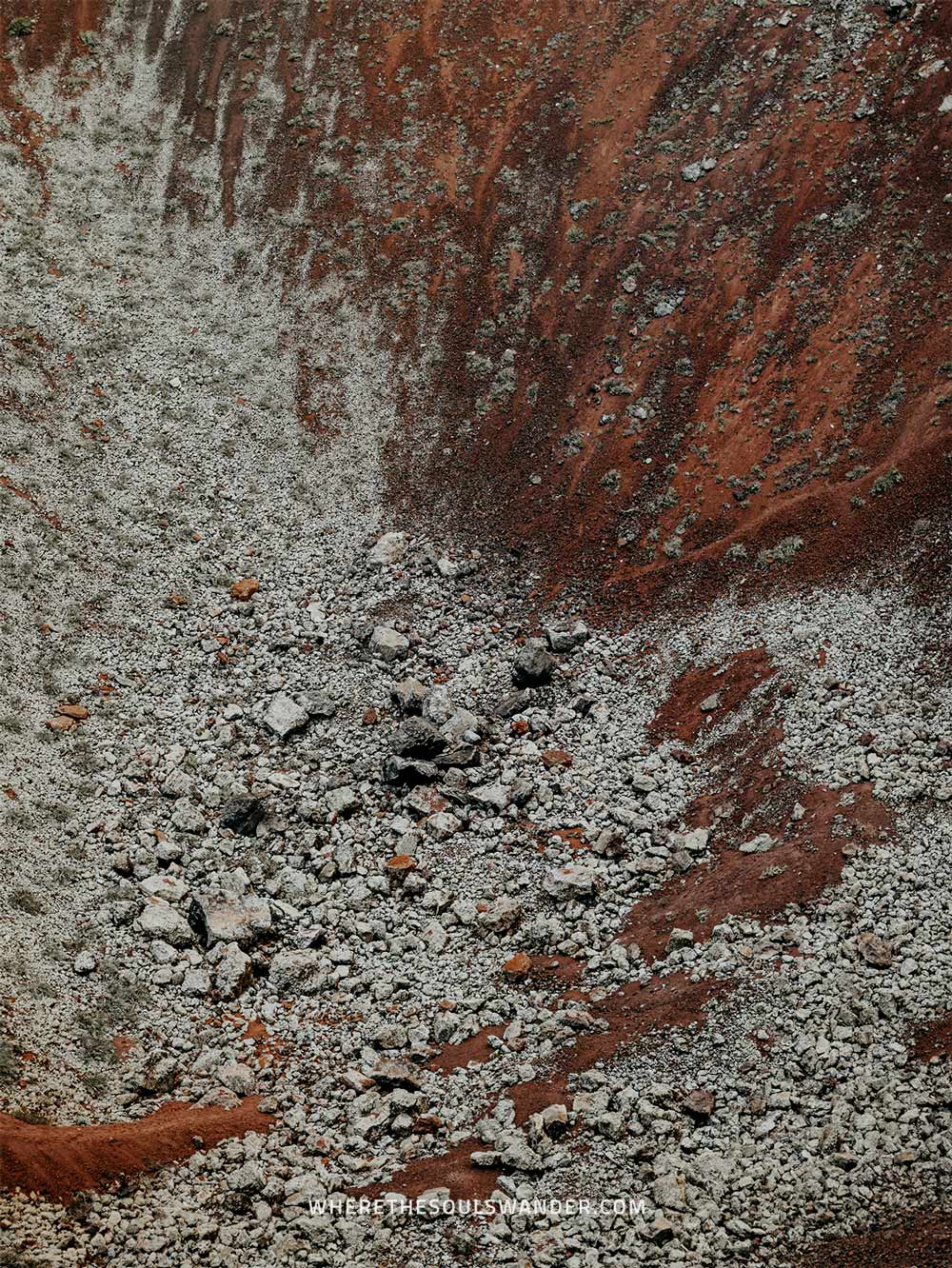
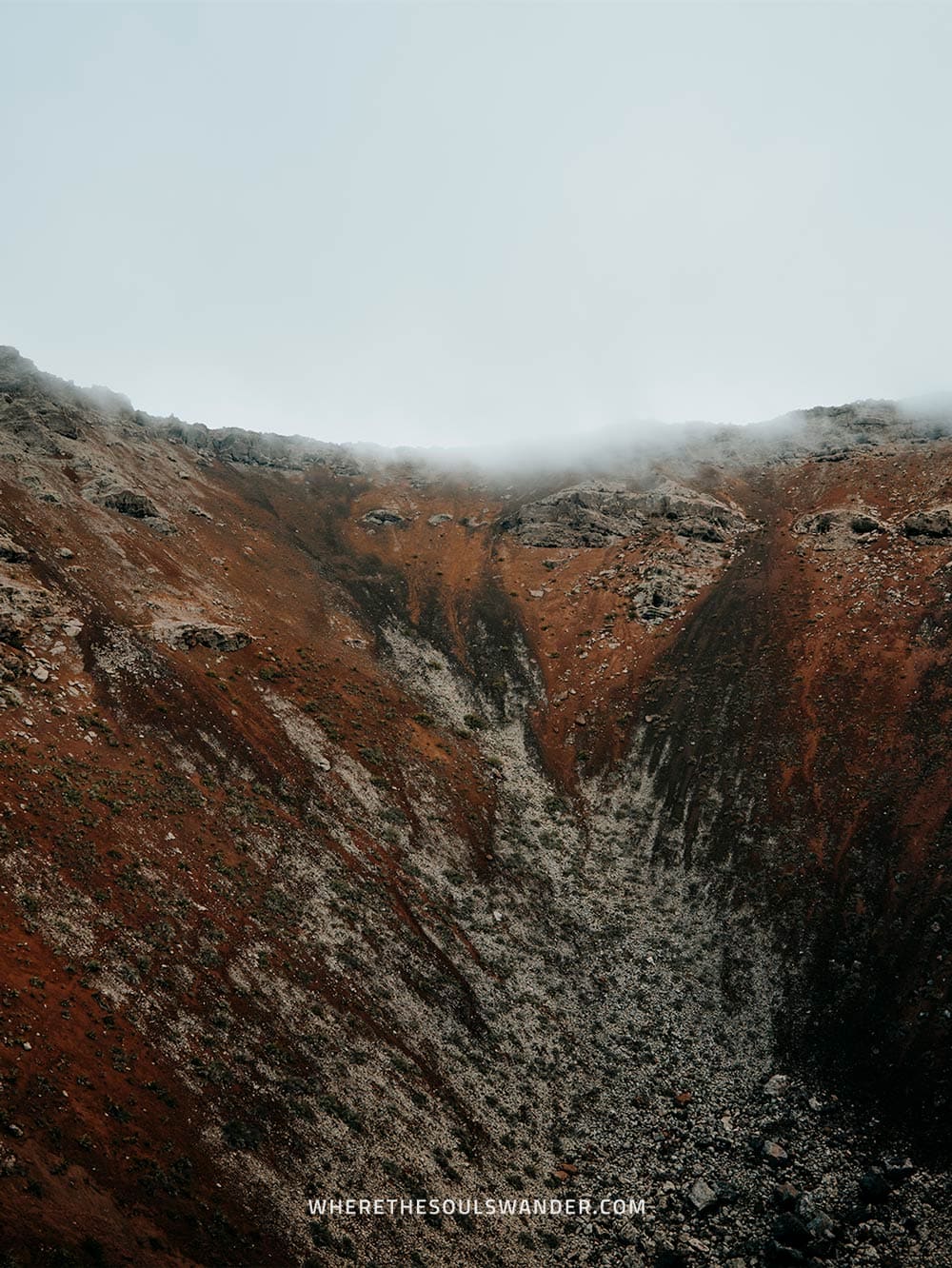
Where is Volcán de La Corona
Volcán de La Corona is a 609-meter-high extinct volcano located near the village of Yé in the municipality of Haría on the northeast of Lanzarote, Spain.
Lanzarote itself is a Spanish island found in the Atlantic Ocean around 125 kilometres (80 miles) west of the coast of Morocco and is encircled by the neighbouring Canary Islands, including the likes of Fuerteventura, Gran Canaria, Tenerife and La Graciosa.
Volcán de La Corona History
The history of Volcán de la Corona is closely related to the history of Lanzarote as a whole.
Legend has it that Volcán de La Corona first erupted roughly 5.000 years ago, at the same moment as the neighbouring vulcanos of La Quemada de Maguez, Los Helechos, La Cerca and La Quemada de Orzola.
At that point in time, there was basically only the island of Risco de Famara.
It wasn’t until the eruptions of the above-mentioned vulcanos that the foundation of what is now Lanzarote was formed, as they released so much lava that the island nearly doubled in size.
As a result, Malpais de la Corona was created, as well as two of Lanzarote’s most-visited geological attractions; Cueva de Los Verdes and Jameos del Agua.
Years later, more eruptions followed, which eventually led to the merging of Famara Island in the north and Ajaches Island in the south.
It was from that exact moment, that the island of Lanzarote as we know it today was formed.
While the 609-metre-high Volcán de La Corona is now extinct, the volcano is still by far the most interesting place to see in this area of the island.
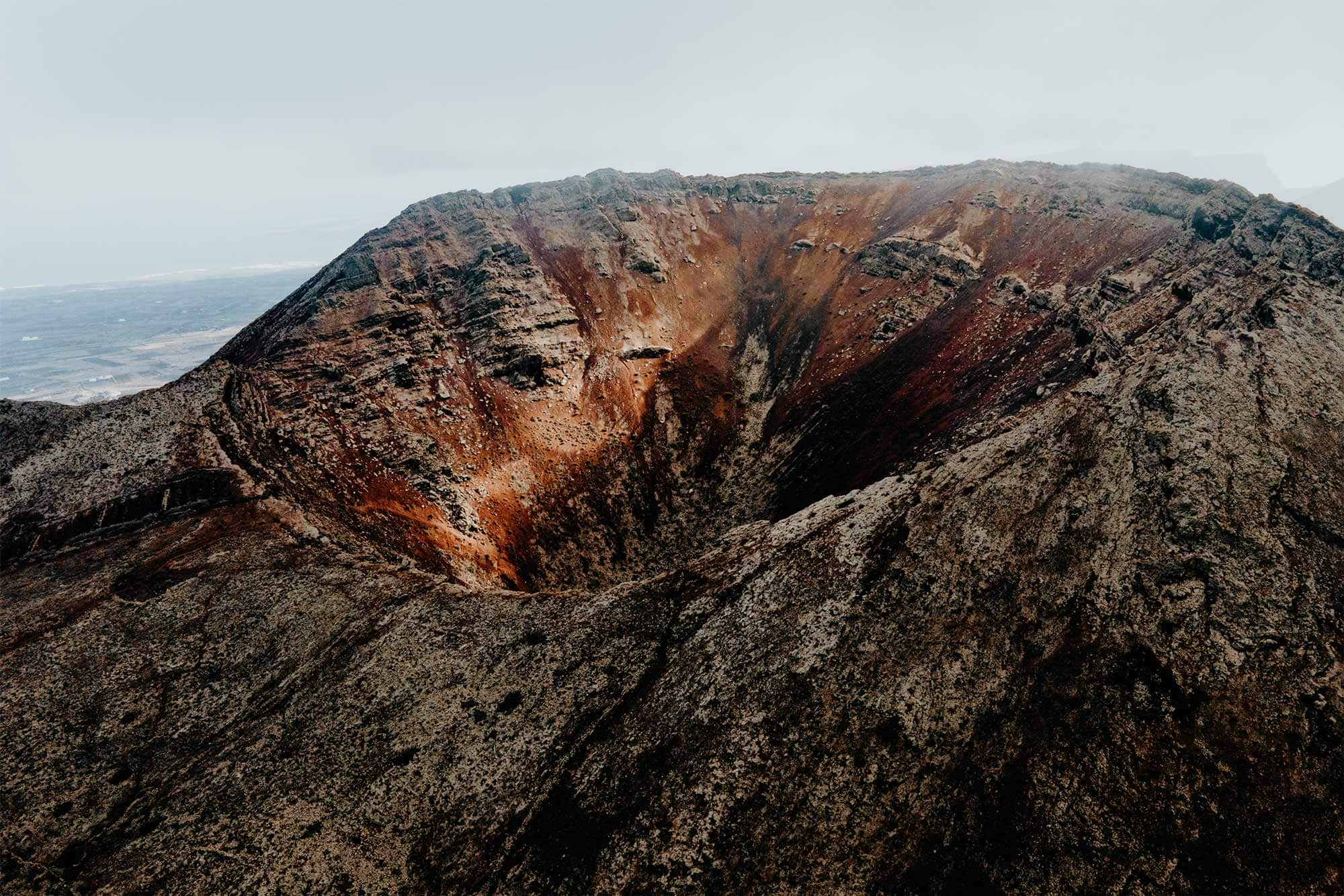
How to get to the Volcán de La Corona
By car
As with most of the things to see and do on Lanzarote, Volcán de La Corona is best to get to by renting your own set of wheels.
For that reason, I highly recommend sorting out a trustworthy car that is suitable for all the different sorts of terrain you’ll stumble upon while cruising over the island.
For car rental on Lanzarote, I would advise Rentalcars.com, as they offer excellent service, additional insurance, and a wide variety of cars available, all at a reasonable price.
Upon arrival in Yé, you’ll notice a small church in the heart of the city with plenty of free parking spaces available – perfect since this is also the official starting point of the hike.
By bus
While I can’t stress it enough to rent a car for the duration of your stay on Lanzarote, it is also possible to get around the island by public bus.
However, it is worth mentioning that public buses aren’t the most reliable ways of transport on the island, given most bus lines do not operate too regularly.
For information on bus routes and up-to-date timetables, make sure you visit IntercityBus.
Join a guided tour
One of the most popular ways to visit Volcán de La Corona is on a guided tour from either Costa Teguise, Arrecife, Puerto del Carmen or Costa Calero.
Volcán de La Corona and the Famara Cliffs
This half-day guided tour includes takes you hiking the immense crater rim of Volcán de La Corona as well as the edge of the impressive Famara Cliffs. The tour includes hotel pickup service in Costa Teguise, Arrecife, Puerto del Carmen or Costa Calero – plus an experienced guide that tells you all the nitty gritty facts about the area.
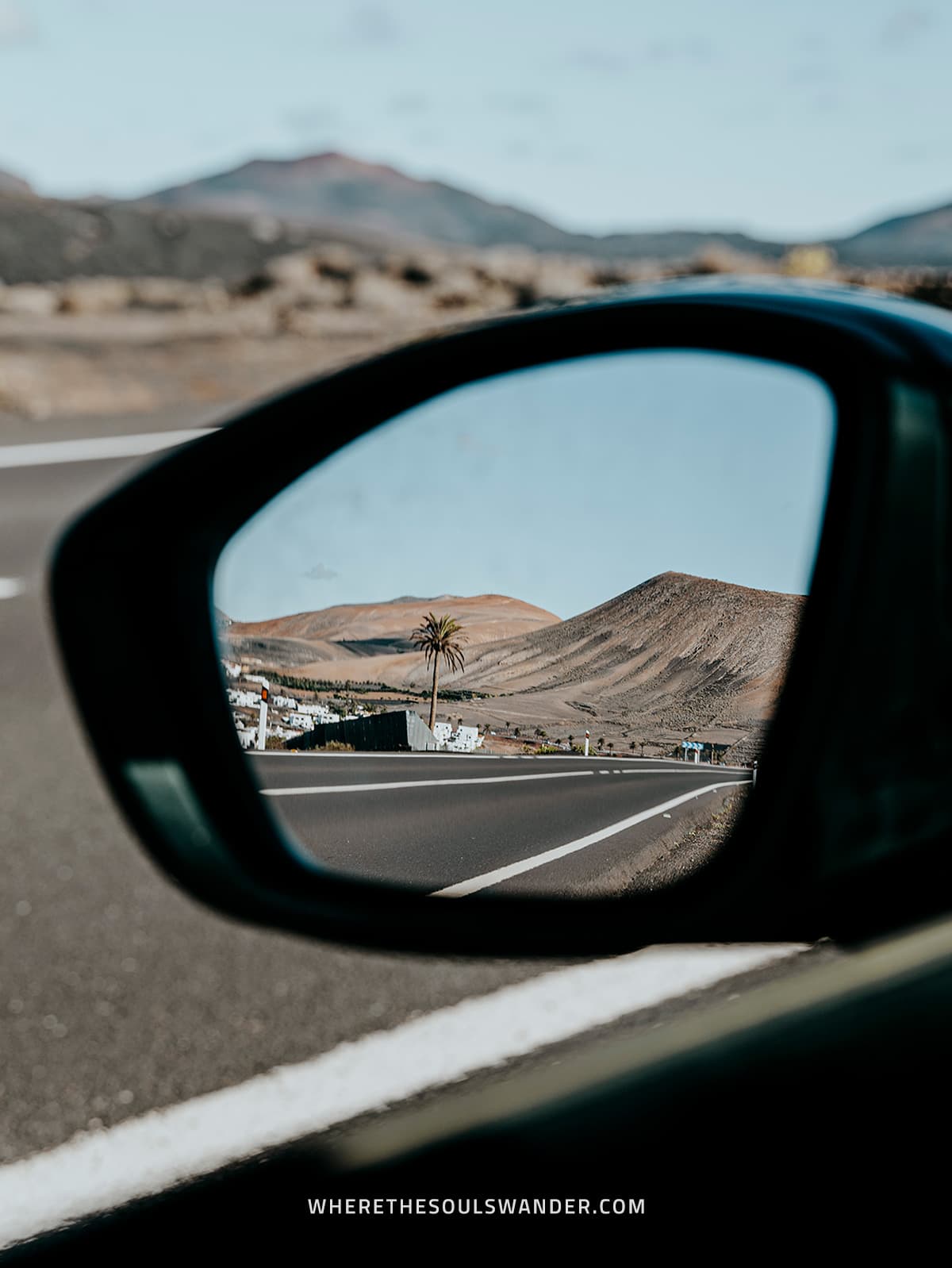
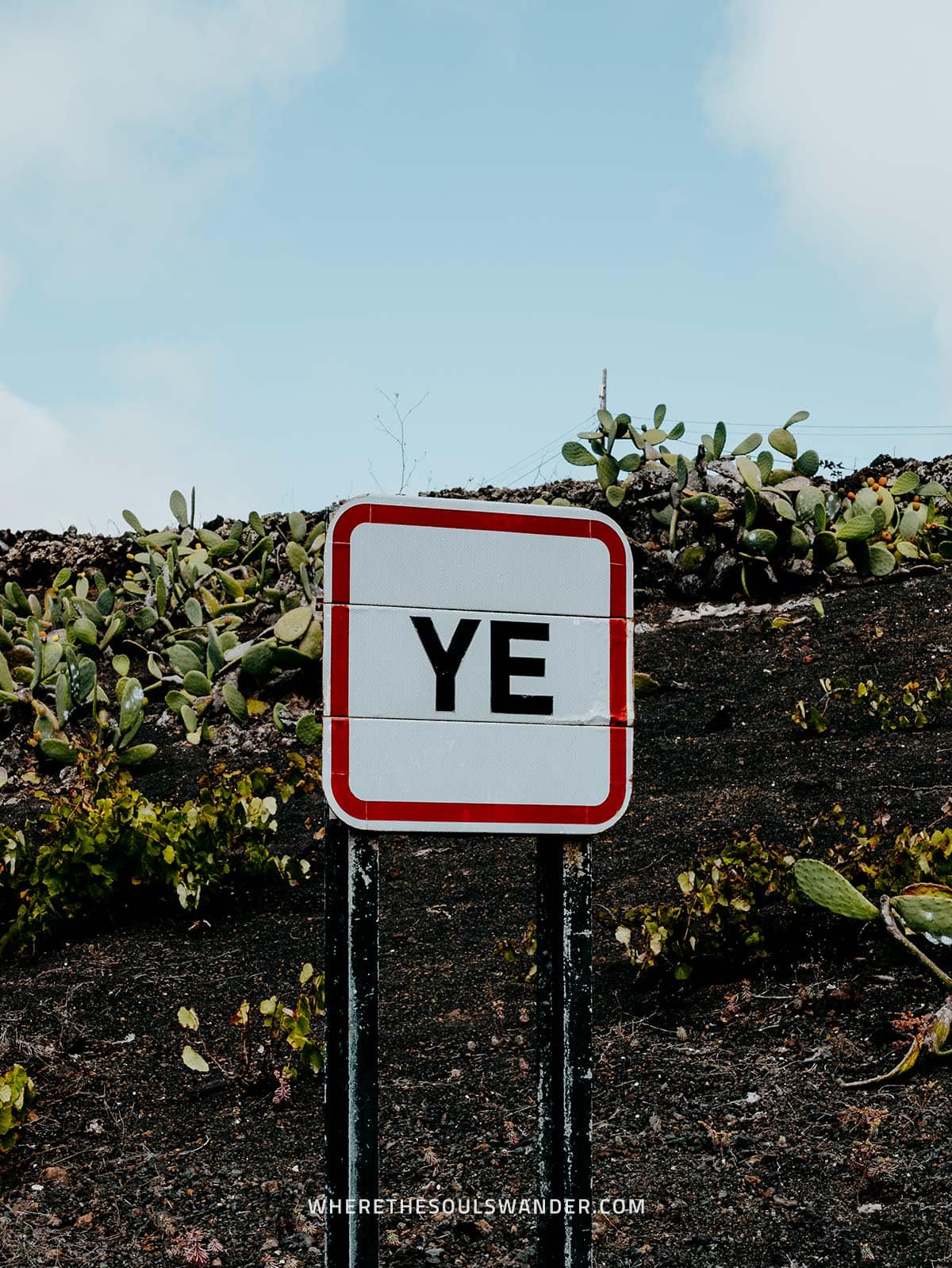
Volcán de La Corona hike | The details
Hike difficulty
Easy
Hike duration
1 to 2 hours
Hike distance
3.4 km round trip
Elevation gain
145 Meters
The starting point of the Hike
The starting point of the Volcán de La Corona Hike is found in Yé, a small village in the picturesque municipality of Haría.
Upon arrival in the village, you’ll unquestionably notice the church of Yé, where there’s plenty of space to park your car.
From the parking, it’s only a short walk to the right until you see a gap between the fields, this is the official starting point of the trail.
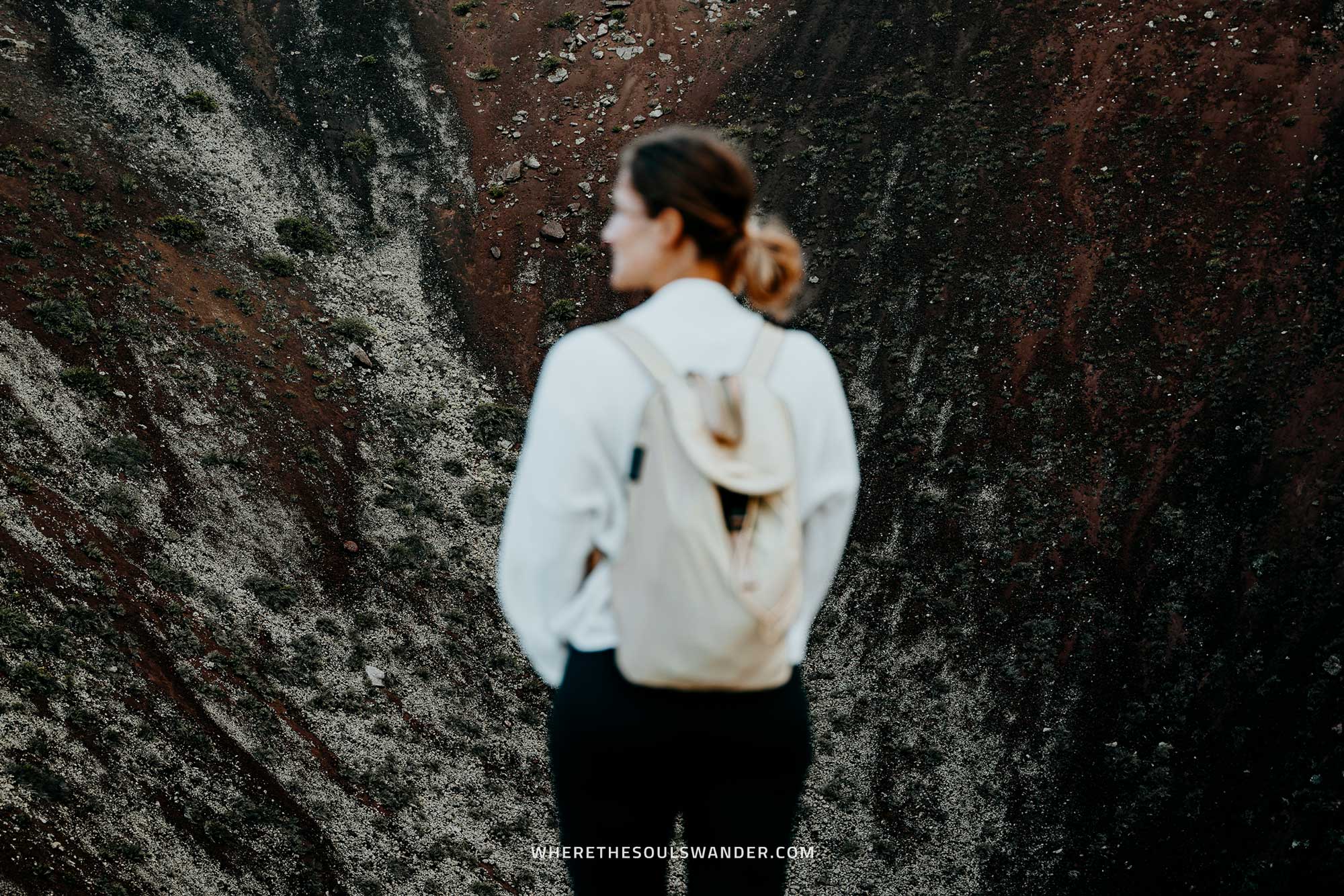
Shanna Ottenhoff from TwentyTwoNotes
Climbing the volcano
As soon as you arrive on the trail, you’ll be surrounded by authentic Lanzarote vineyards, which are characterised by a unique technique that protects the grapes from heavy winds and desert-like conditions.
The trail itself starts off relatively flat and gives you a great insight into Lanzarote’s unique flora and fauna, such as wildflowers, cactuses and a few palm trees.
After a short while, you arrive at the foot of the volcano and start the climb to the summit. While there’s definitely some incline to handle, I believe it’s manageable for basically any level of physical fitness.
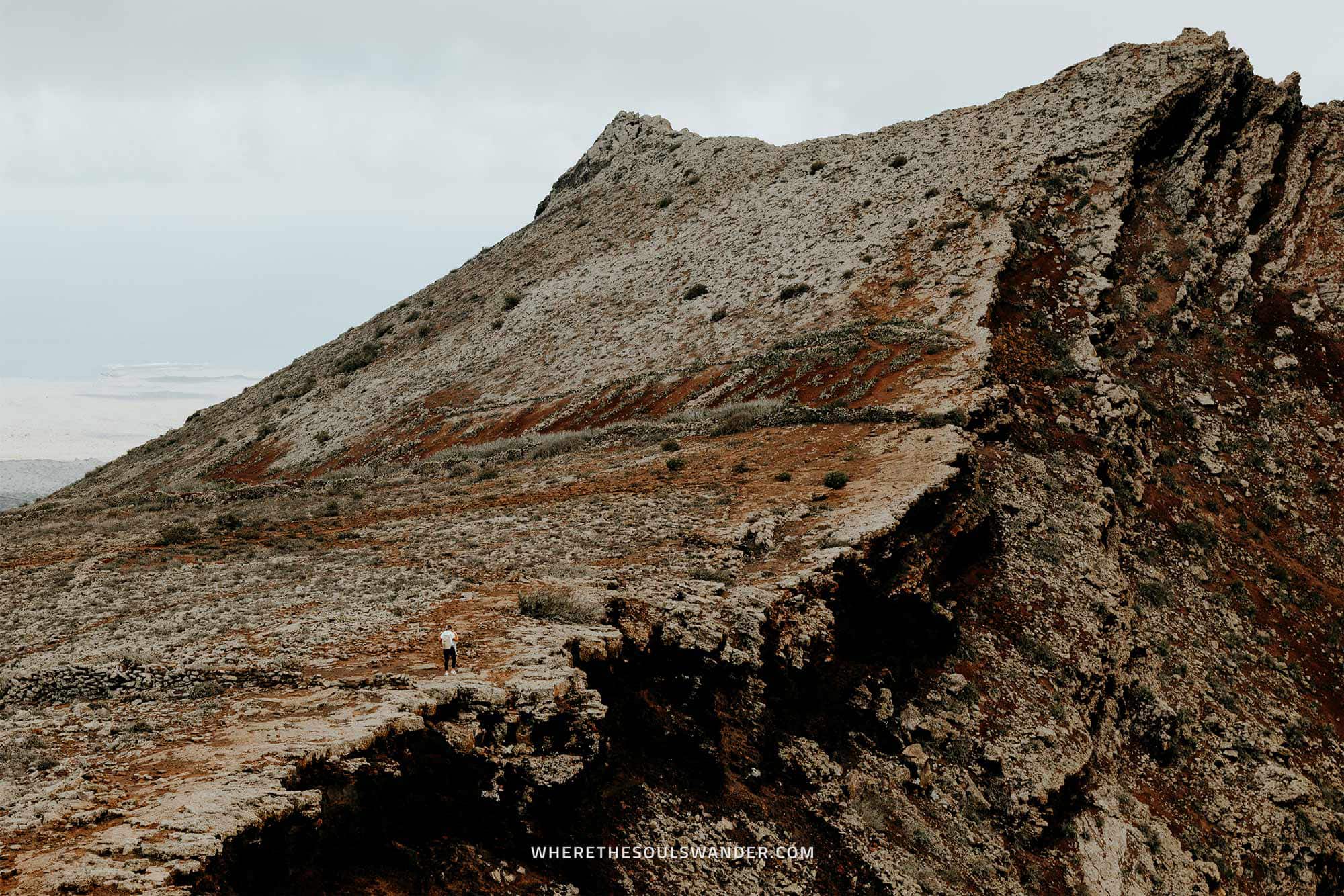
Reaching the summit
Once you’ve completed the short climb up, you’ll be welcomed by some of the most spectacular views of the island – which, on a clear day, reach as far as the eye can see.
At this point, you’re standing at a height of roughly 609 meters above sea level.
When I arrived at the summit of the volcano, I wandered around the ridge and was rather surprised, as both the size and the depth of the crater were exceptionally impressive.
I’ve spent about an hour taking it all in, before starting the journey back to my car.
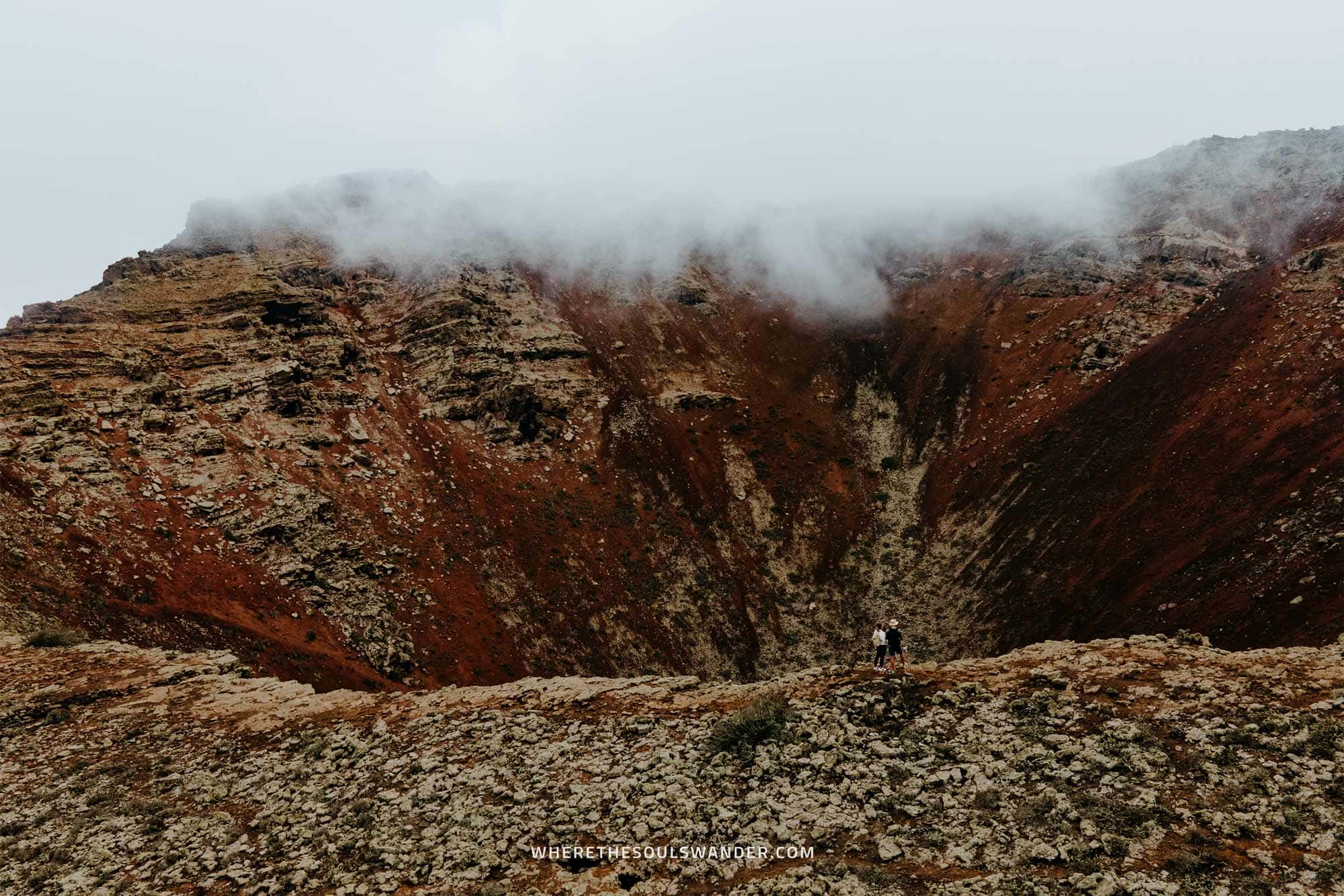
Walking the ridge
Whilst it is said that you could walk around the crater of Volcán de La Corona, I noticed several warning signs that said it wasn’t allowed.
After my recent visit, it’s easy to see why, as the terrain looked rather unreliable the further you move up the ridge.
Add to that, that it’s extremely windy here, and you instantly realize why they put those signs in place.
Although I can’t tell if those signs are there year-round, I strongly discourage trespassing – so be sure to respect the local rules as per usual.
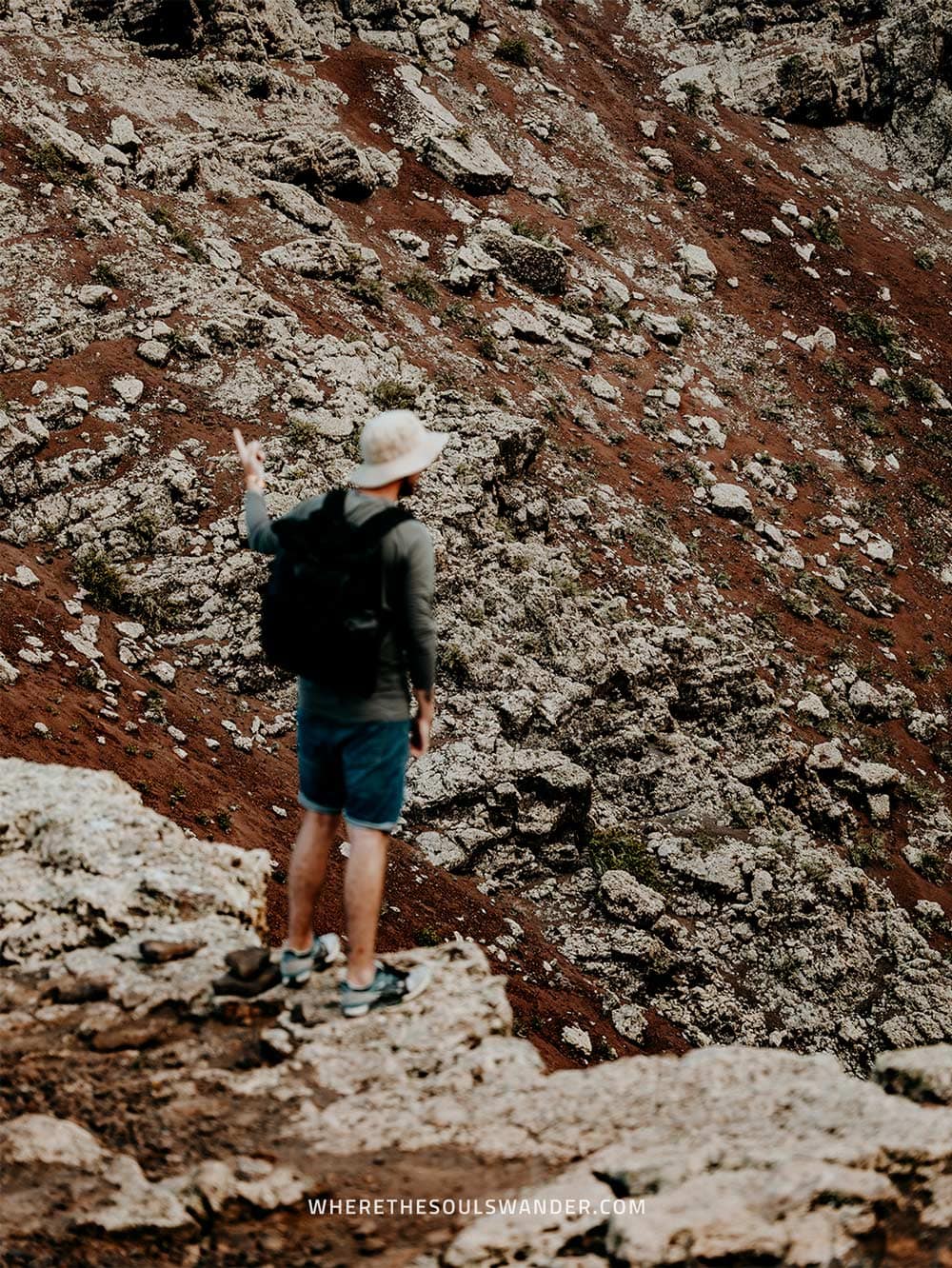
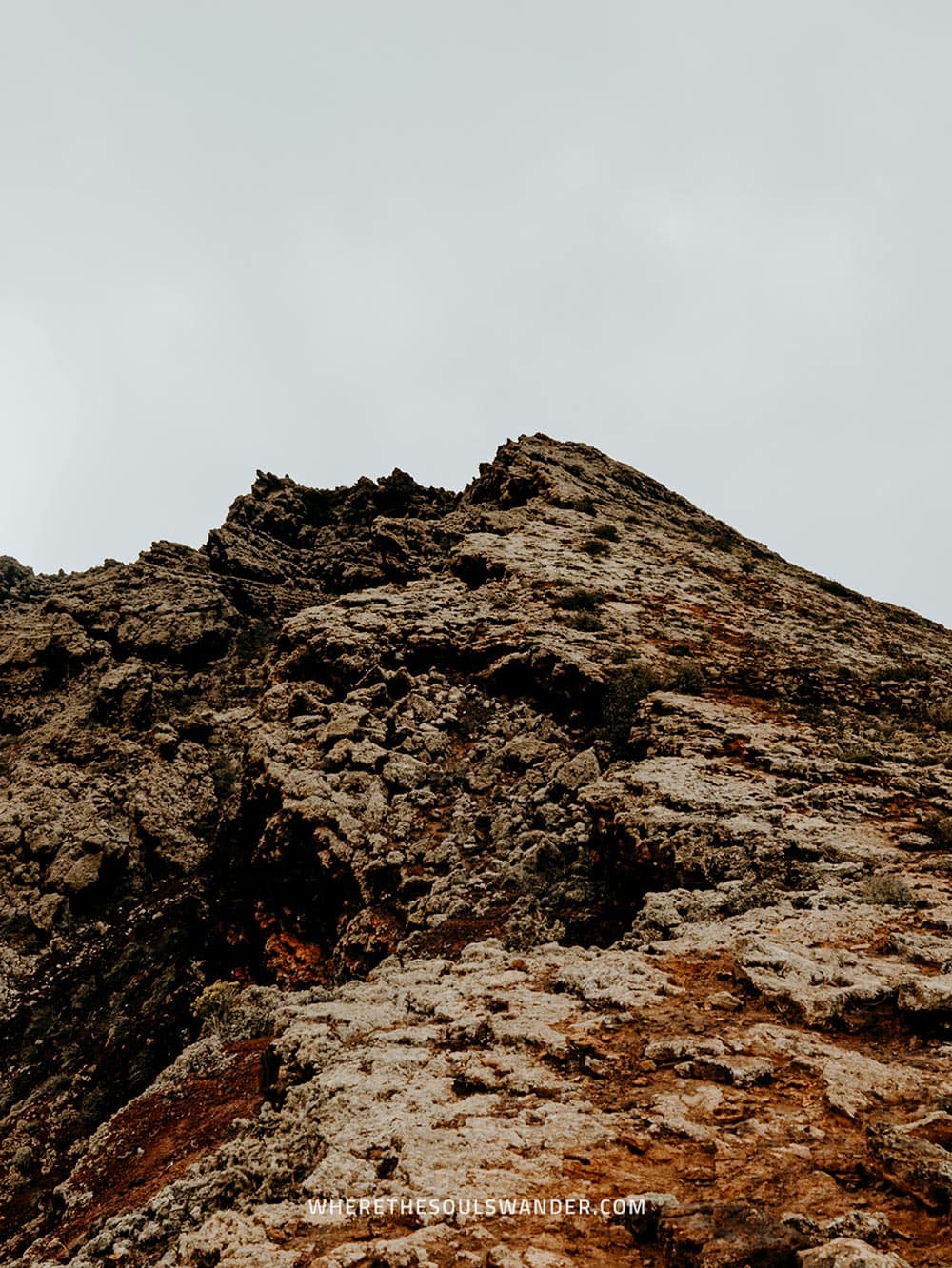
The way back
Once you’re done at the top, simply follow the same route back until you reach the road.
While it’s completely possible to make the hike circular, I wouldn’t recommend it as the other trail is much more challenging, with lots of thorny bushes that you have to dodge.
Also, you won’t miss anything spectacular if you opt for the same route back – so don’t make it unnecessarily hard for yourself.
A cinematic drone video of Volcán de La Corona
Where to stay on Lanzarote
Lanzarote is relatively compact in size and is easily navigated by car, meaning you could basically choose to base yourself anywhere along its picturesque coastline.
I personally opted to stay in different areas to make explorations around the island as convenient as possible, which also gave me the possibility to experience various towns and their specific atmospheres.
For my adventures on this side of the island, I based myself in Costa Teguise around half an hour’s drive from Volcán de La Corona.
To help you find the right accommodation, I’ve listed some of the best picks out of the bunch below;
Tequise
Situated in the heart of the authentic town of Teguise, Hotel Casa de las Flores is a truly stunning boutique hotel with an excellent blend of local and modern design elements. Deluxe double rooms start at €147 a night.
Costa Teguise
Barceló Lanzarote Active Resort
One of Costa Tequises’ most popular accommodations, Barceló Active Resort is a well-designed all-inclusive resort, perfect for those looking for a stress-free stay. Double rooms start at €90 a night
Puerto del Carmen
If you’re looking for a budget-friendly apartment in Lanzarote’s number one beachside town, Apartamentos Acuario Sol will certainly be for you! With spacious rooms, a large outdoor swimming pool and its excellent position near both the boulevard and the beach, I believe this apartment is great value for the money. One-bedroom apartments start at €78 a night.
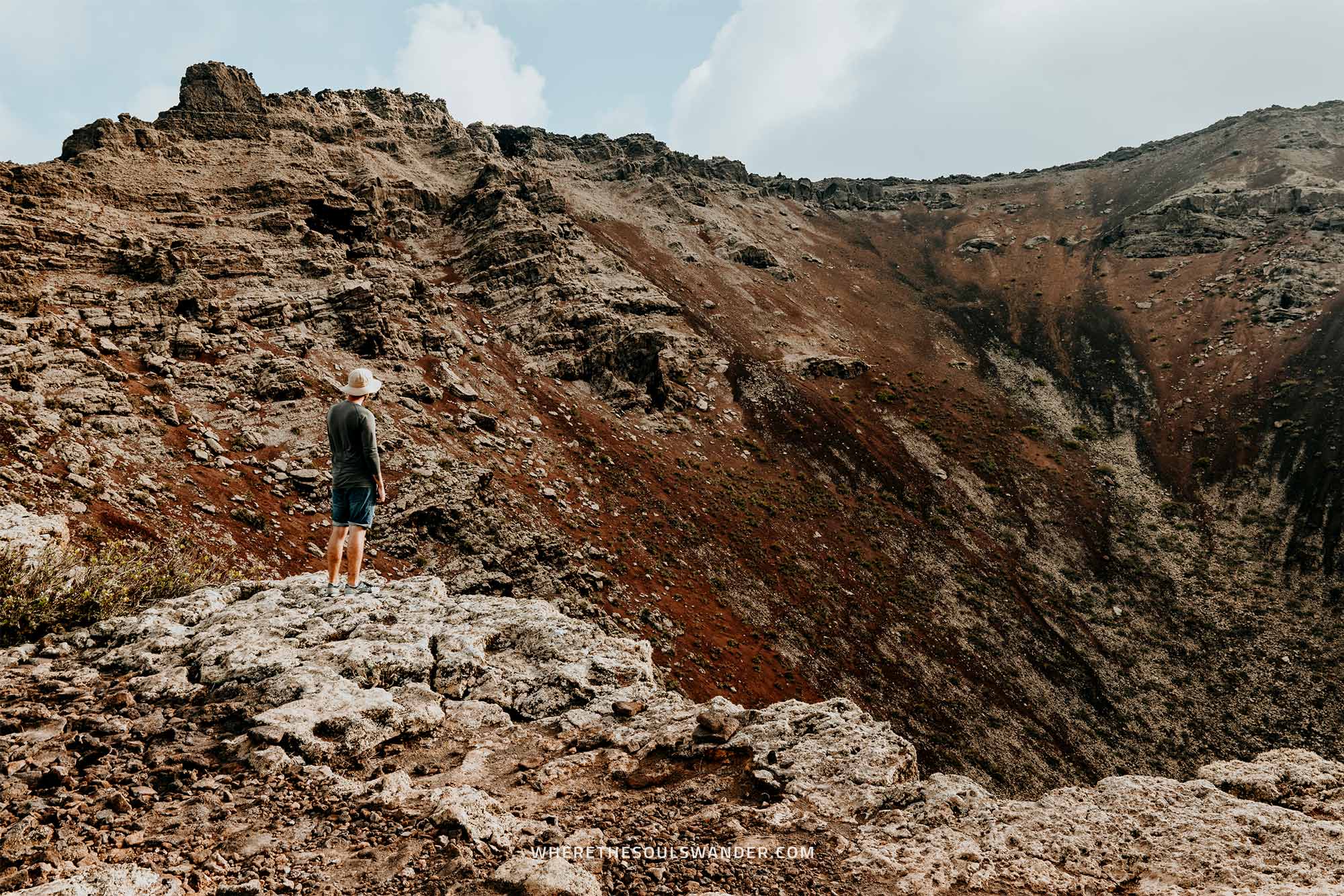
Best time of year to visit Volcán de La Corona
Given Lanzarote is situated only just off the coast of Morocco, the island is considered a year-round destination, with comfortable weather circumstances most days of the year.
However, the peak season on Lanzarote is during the summer months of May to September.
During this period, the temperature frequently rises above the 30°C mark, which could make hiking trips slightly challenging if you ask me.
For that reason, I’d highly recommend visiting Lanzarote for the shoulder months, which is basically every month outside the peak summer months mentioned above.
I personally visited Lanzarote in September and had mostly clear days, with temperatures ideal for hiking activities and days spent relaxing on the beach.
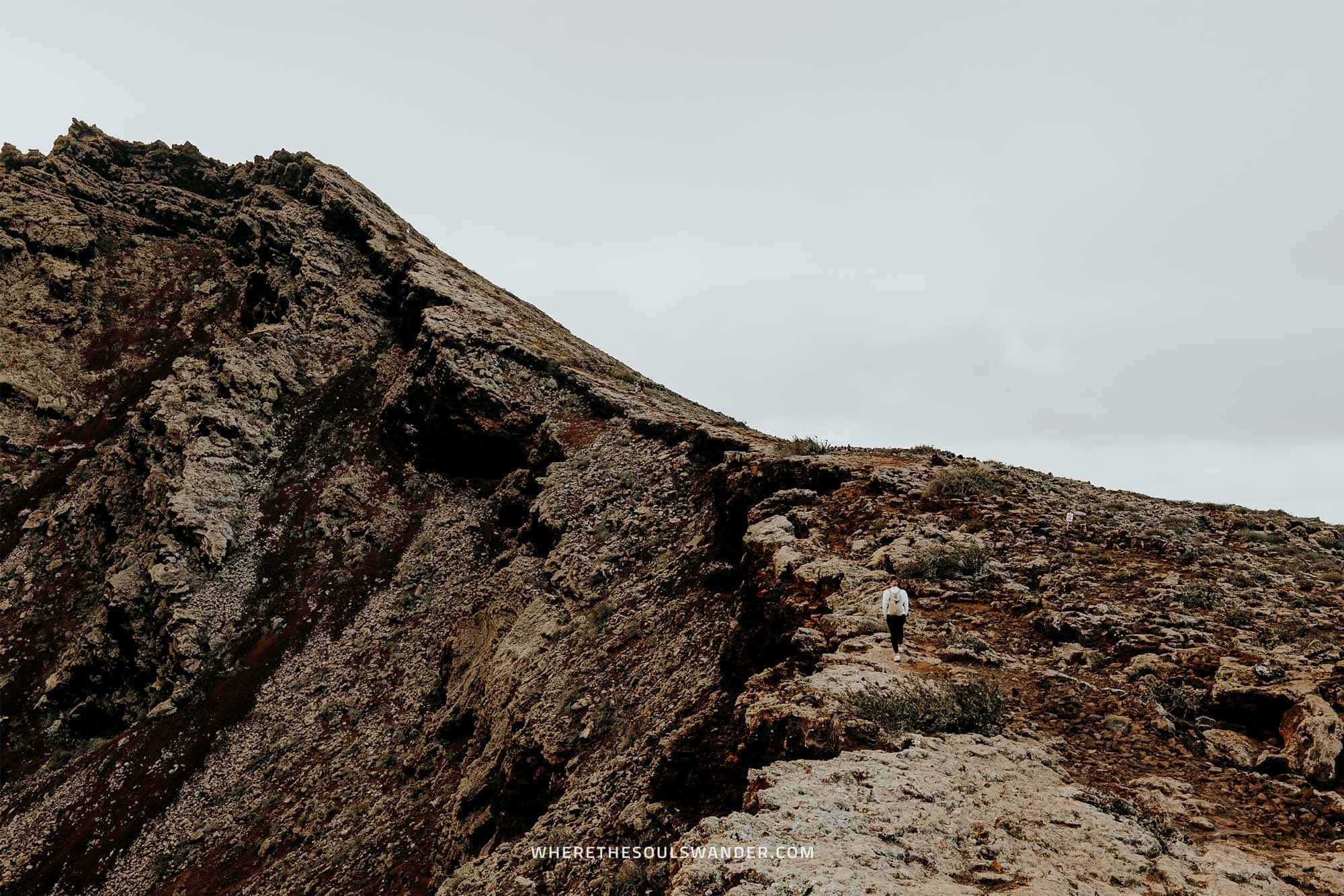
Best time of day to visit Volcán de La Corona
Since Volcán de La Corona offers some of the most fascinating views on the whole of Lanzarote, I’d highly recommend visiting in the late afternoon, as it’s widely known that the island starts off the days cloudy.
Also, I can’t stress it enough to avoid hiking here during the middle of the day when the sun is out and blazing. Trust me, the trail is fully exposed and there’s literally no place to take cover.
Personally, I visited Volcán de La Corona in the late afternoon, and I believe it’s safe to say that this is the absolute best time to visit, especially if you are travelling to Lanzarote during the warmer summer months.
While the weather wasn’t particularly in my favour during the hike, it was still pretty awesome, with thick layers of fog setting a mystical, yet moody vibe.
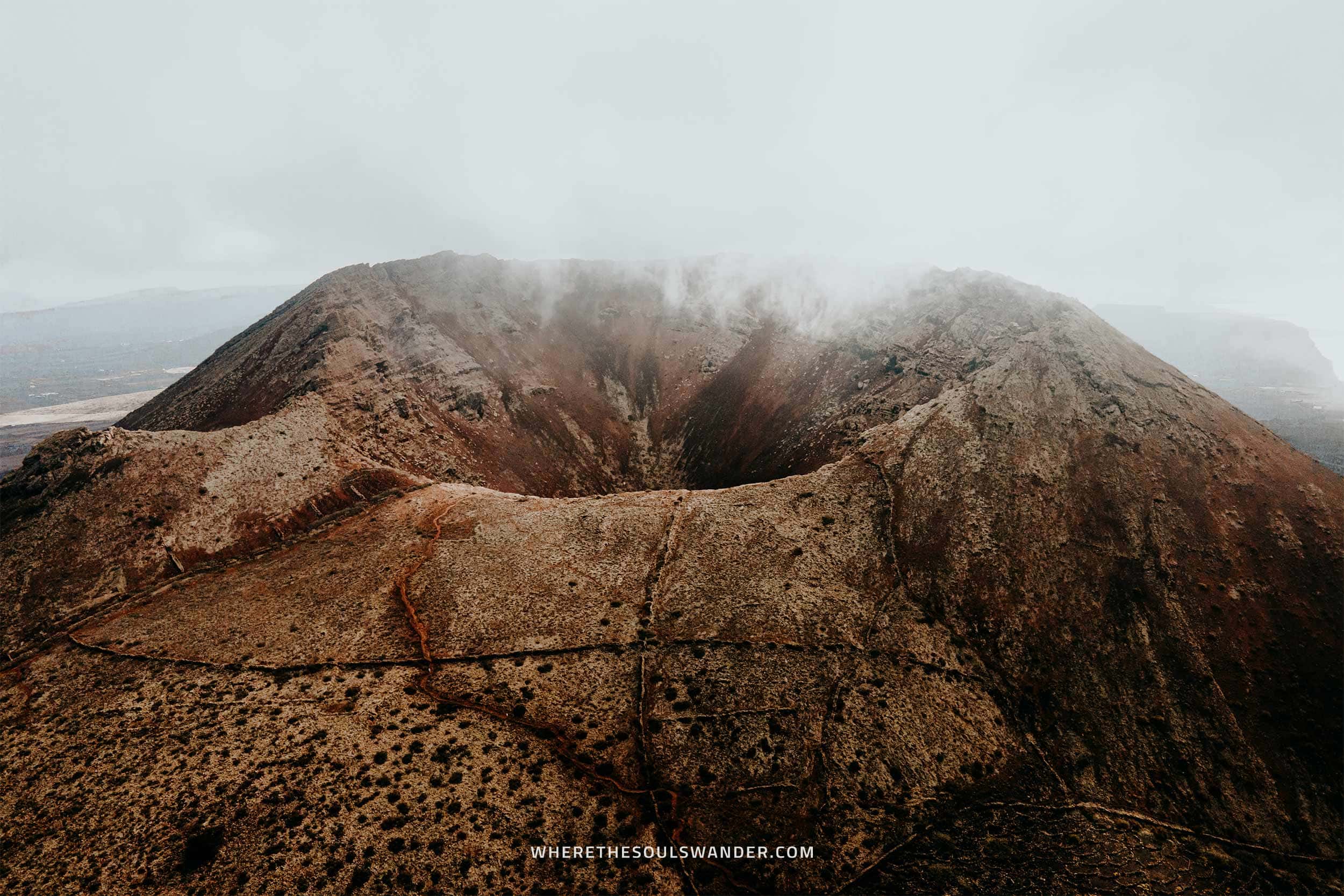
What to pack for the Volcán de La Corona hike
Given Lanzarote is spoiled with tropical weather and rough landscapes, it is essential to travel through Lanzarote with the right type of kit.
Having said that, there are a few items that will make your explorations around the island a bit more relaxed.
To help you have comfortable adventures, I’d highly advise packing the following items:
Reusable water bottle | One travel essential that I carry with me at all times is the Grayl Geopress. This reusable water purification bottle allows me to fill up water from nearly every water source, making it one of my best investments to date.
Hiking boots or a sturdy pair of sneakers | The terrain at Volcán de La Corona is relatively rough, gravelly and uneven. While you don’t necessarily need hiking boots, it’s absolutely essential to wear a sturdy pair of sneakers. I recently bought the New Balance Hierro v7, and am really pleased with them, as they offer all the feats of a hiking boot, while still looking like a dope sneaker.
Sun protection | Since the heat is oftentimes fierce on Lanzarote, I wouldn’t recommend attempting any hiking adventures without the right type of sun protection. For that reason, I can’t stress it enough to bring sunscreen and a hat.
Snacks | There are not many shops near Volcán de La Corona, so I suggest bringing a few snacks to avoid that you might get hangry during the hike.
A camera | In my opinion, Volcán de La Corona is one of the most impressive vulcanos on the island, so I’m sure you’ll click plenty of photos while you’re there. Curious about my photography gear, make sure you see what’s in my camera bag.
Leave no footprints | Always keep in mind to respect the locations you’re visiting. I can’t stress it enough to bring your trash back with you when wrapping up the hike.
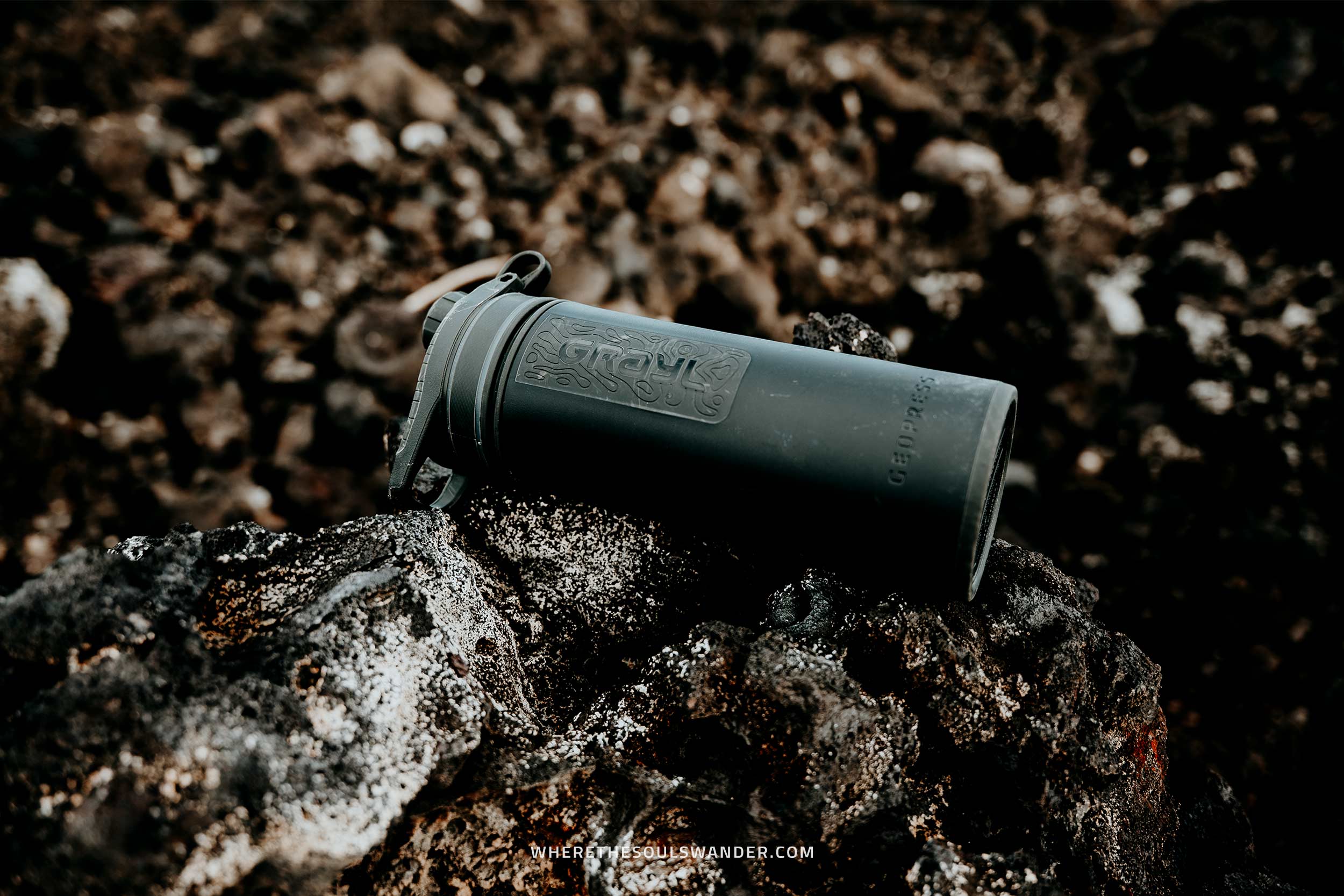
Stay safe on Lanzarote | Travel insurance
Since Lanzarote has no shortage of adventurous activities, I advise everyone to sort out good travel insurance before setting out on their adventure to the island.
Though I firmly believe that it’s unlikely to experience any troubles when following the advice in this guide, something unfortunate can happen at any time, whether it’s an injury, a stolen camera, or an accident on the road.
For travel insurance, I use Heymondo, as they offer full covid-19 coverage, as well as a handy app with 24-hour medical assistance. Make sure you check it out – readers of WTSW receive 5% off any insurance policy too. Additionally, I also recommend World Nomads.
PLAN YOUR LANZAROTE ITINERARY WITH THESE ESSENTIAL GUIDES
Nothing found.

